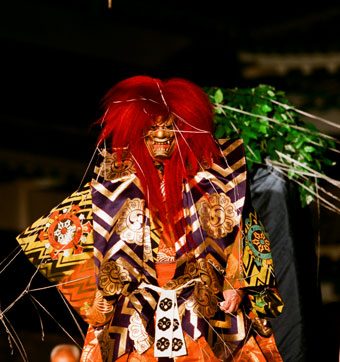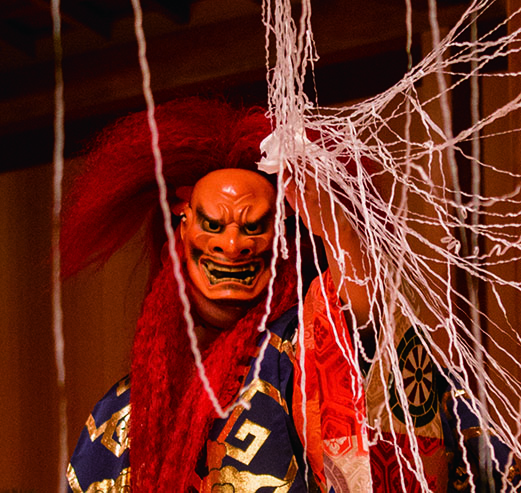
courtesy Keio University
Spiders in myth
Anyone familiar with Noh and Kabuki will know of the Tsuchigumo, or ground spider. These plays are sometimes put on at shrines for the entertainment of the kami. The creature plays a part too in Shinto myth through appearance in the Kojiki and Nihongi. What is its significance? From the Japanese Mythology and Folklore website comes a revealing piece that links the spider with shamanic clans in East Asia.
*****************
The spider was synonymous in the ancient Kojiki and Nihongi chronicles with local indigenous renegade clans. The symbol later evolved into the yokai supernatural folkloric proportions that we know today. These clans were found from Yamato Katusragi to the easternmost Japan, and associated with mounds and caves or rockcut catacombs. They were thus either indigenous descendants of the Jomon, or another settled tribe of Eurasian or Southeast Asian origin.

The Chu (Zhu) state, Zhou dynasty period people in Southeast Asia had a spider as their totem (and Chinese character name). Altaic shamans, in addition to deer and bird, sometimes had the spider spirit as helper in their travels to the Underworld.
From Lappland to Central Asia, the spider was a divine or lucky emblem, but large hairy or venomous spiders were also best known there and associated with caverns and holes in the ground, among which species were the Ladectrus or the black widow spider, that commanded the respect of the land’s peoples.
Japan has an East Asian species that spins characteristic webs very low from the ground, trapping predators and deterring mammals. A benevolent goddess spider is still known from the folklore surrounding the Joren Falls in the Izu peninsula in eastern Japan. The spider is also associated with the Orion constellation from ancient Eurasia across the Beringia to the Americas (among the folklore of the Chinook, Bigfoot and other tribes).


Leave a Reply